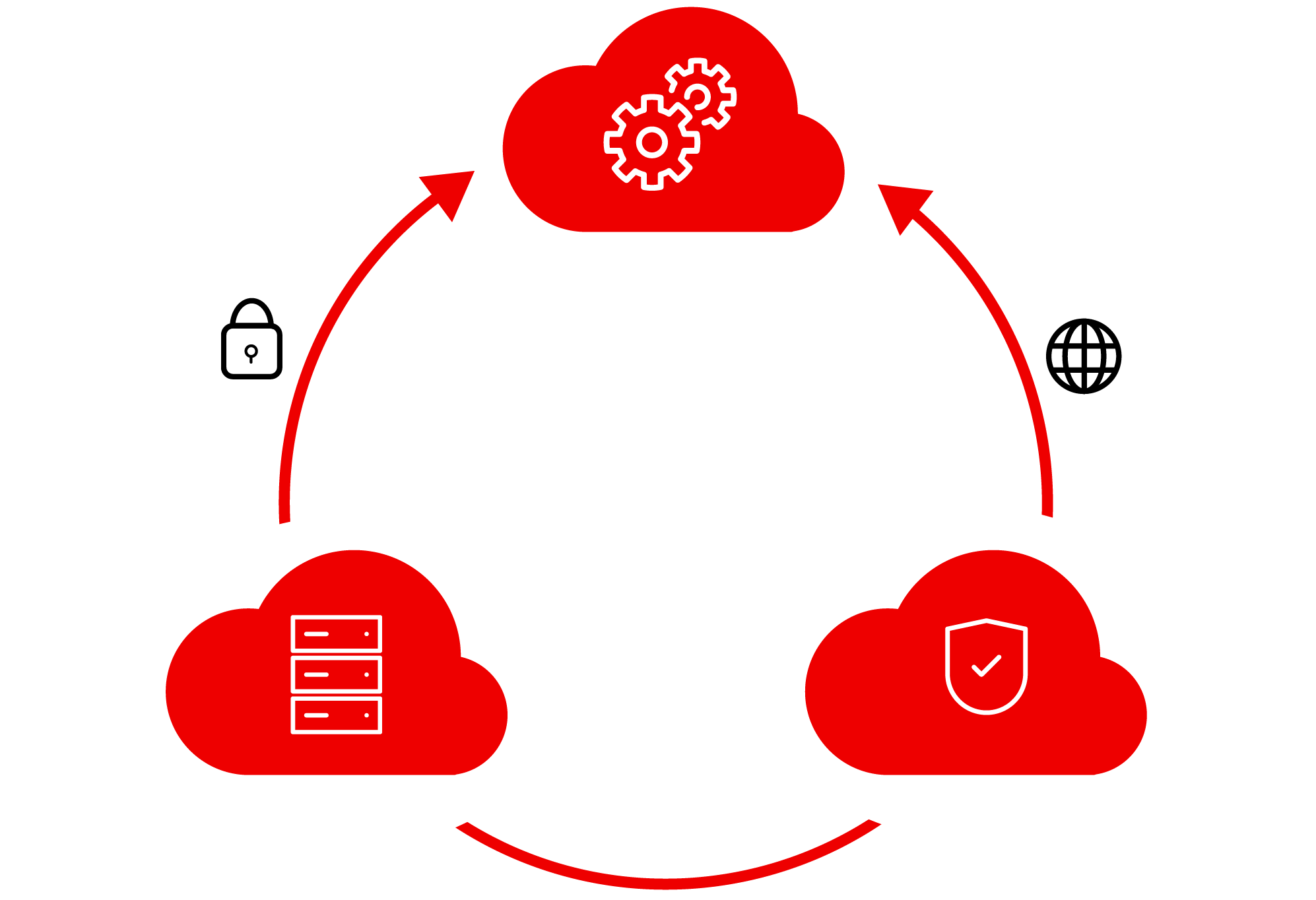Hybrid cloud architecture
Hybrid cloud architecture combines a mixture of public cloud, private cloud, or on-premises infrastructure for storage and computing. It includes software components that connect these parts, enable them to communicate, deliver updates, ensure security, and help the organization manage it all.
What is hybrid cloud architecture?
Hybrid cloud setups have become the dominant approach for enterprise-level companies. When you consider its advantages, it isn’t surprising that in 2020, 63% percent of the surveyed IT leaders had implemented a hybrid cloud system, and 54% of the rest planned to make one. A hybrid cloud combines a public cloud infrastructure’s scalability and speed with a private cloud’s security and compliance. Its flexibility improves cost efficiency, too, as companies leverage various public cloud offerings for low sensitivity and high volume requirements.
Hybrid cloud systems also enable more robust disaster recovery. The distributed approach across multiple instances ensures that the rest of the system continues to function even if one part goes down. Moreover, using the public cloud removes some burden of infrastructure maintenance, and software upgrades for a fully private solution.
As technologies advance and regulatory and security concerns grow, the hybrid cloud will continue to yield benefits. The increasing complexity and interconnectivity of IT systems require flexibility, scalability, and robust security, all strengths of the hybrid approach.

Latest hybrid cloud architecture articles

Learn about the right-sizing recommendations for OpenShift Virtualization...

Troubleshoot and benchmark OpenShift Virtualization workloads by seamlessly...

Learn how to use Red Hat Lightspeed image builder to create images that are...

Explore the latest features, updates, and fixes in Red Hat OpenShift 4.20,...

Celebrate our mascot Repo's first birthday with us as we look back on the...

Explore the basics of quantum computing, its implications for real-world...











